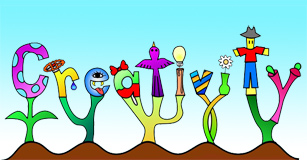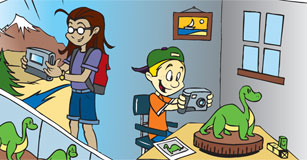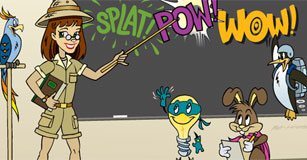The Power of Play
Re-invigorating creative learning

The pendulum swings back and forth in education. Waiting at one end of the arc is a myopic focus on academics and accountability, often in the form of high-stakes testing. Fueled by a fear of “falling behind,” learning environments that encourage exploration and experimentation are pushed aside in favor of early academics, more homework, and correct answers on bubble sheets.
In the US, we are currently awakening from such a pendulum swing to the realization that all work and no play is more than just developmentally inappropriate; it is counterproductive to the kind of academic excellence that is rooted in deep understanding, creativity, and the ability to think critically. The MIT media lab believes so strongly in the importance of play that it has created the Lifelong Kindergarten Group, tasked with the mission to legitimize and elevate the type of playful exploration once found in kindergarten.1
What do we mean when we speak of play? Peter Gray, professor of psychology and blogger for Psychology Today, suggests exploring the definition of play in order to better understand its fundamental roles. He identifies five characteristics of play2:
- it is self-chosen and self-directed
- means are more important than ends
- it has structures or rules, but these may be self-defined
- it is imaginative, non-literal, and removed from “real” life
- it involves an active, alert, non-stressed frame of mind.
“Work and play are words used to describe the same thing under differing conditions.”
–Mark Twain
These characteristics are often found in classroom environments that lean toward student-centered and inquiry-based learning. The idea that play is incompatible with or the opposite of learning is a misconception. Play benefits physical, emotional, cognitive, and social development. Children who are provided opportunities to interact with peers with minimized adult intervention show higher levels of executive functioning – important skills that contribute to problem-solving abilities and positive personal interactions.
Professors Dorothy Singer, Roberta M. Golinkoff, and Kathy Hirsh-Pasek have written a Manifesto of Play3 that proclaims that “Our culture has taken a wrong turn. In its rush to create a generation of Einsteins, it has forgotten about the importance of play for children's development.” They list numerous examples of how play and learning are one and the same for children, including benefits such as providing a meaningful context for the learning of concepts and the practice of skills, extension of learning, and encouraging children to experiment and take risks.
In my personal experience as a teacher, I have seen that as children spend more time in school they lose some or all of their natural comfort with learning through spontaneous, playful exploration.
Imagine a toddler with a big pile of blocks. Does the toddler ask an adult, “What should I do with these blocks?” Does a toddler start with a “product” like a big tower in mind and ask, “How do I stack these blocks to make this tower?” No. The toddler jumps in and begins to explore, free from the stress of doing it “right.” Rather than feeling frustration when the tower topples over, the young child is delighted by this and may knock it over and rebuild it again and again.
This type of creative thinking is nurtured by play. When play is seen as the enemy of productive learning, children grow to fear the “wrong” answer and come to associate trial and error with failure.
Open-ended technology tools may provide a bridge for educators looking to re-invigorate their classrooms as places of playful learning. Open-ended situations in learning are, like play, focused on means as opposed to ends. They seek to engage imagination, and are open to, and even encourage, adaptation.
Precisely because they do not have only one right answer, open-ended problems stimulate creative thinking. There are many possible solutions to a single open-ended problem. The means – exploration, trial and error – are more important than just getting the right answer.
Educator Dr. Henry Olds Jr. has been exploring the role of play in mathematics learning by having students create, discover, and extend patterns. In his article, Iconic Pattern Play, Dr. Olds identifies potential uses of technology tools as a way to harness the positives of play. Technology applications offer children an abundance of materials and choices in a no-risk environment where mistakes are easily changed with a click of the “undo” button.
The big problems facing our world have neither simple solutions nor a single correct answer. These problems will be tackled by open-minded, confident, creative thinkers, people who are comfortable with exploration, innovation, and learning from mistakes. Incorporating play into the learning environment can help ensure that we are educating today's children to be those people.
Resources
1.Lifelong Kindergarten Group at MIT
2. Peter Gray: The Value of Play I: The Definition of Play Provides Clues to Its Purposes.
3. Kathy Hirsh-Pasek, Roberta Michnick Golinkoff, Dorothy G. Singer. A Manifesto on the Importance of Play for Children's Development.













